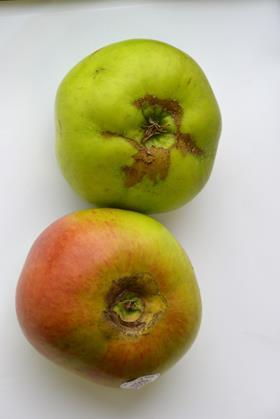
The topfruit industry is facing one of the most challenging northern hemisphere seasons in recent memory after severe frosts in spring caused widespread damage to orchards across key British growing regions.
When picking started, labour shortages caused by Brexit as well as a strong end to the soft-fruit season meant lower volumes of early-season fruit were picked, leading to a raft of potential issues for growers. “Harvesting has been underway over the past four weeks and the effect of the early frost at blossom time has created huge variations in fruit numbers, size, and storage potential, due to mixed maturity often in the same orchard,” explains OrchardWorld procurement manager, Alan Griffiths.
“In some orchards I have seen this year, the ends of the rows can be full with normal-looking fruit numbers, but as you walk up the rows, there are trees with nothing. Especially affected this year with fruit numbers have been Cox and Braeburn, but Bramley has suffered with a huge percentage of frost eye.”
Despite this, Griffiths says OrchardWorld expects overall fruit tonnage not to be not as low as first thought, a view echoed by Avalon Growers Producer Organisation (AGPO) manager Sarah Calcutt, who says pears in particular have recovered in some areas.
“However, a fair percentage of this volume will not meet supermarkets’ lower size specification, and therefore will only find a home in the juice bin,” continues Griffiths. “Our other concern is storage potential; this is down to two main reasons. Firstly, the inability to pick early enough for long-term storage, and also larger fruit is notorious for not keeping as well as small fruit.”
Calcutt adds: “There was a lot of panic around the time of the frosts and an awful lot of damaged fruit. East Kent was worst hit, but there were random bare orchards across the county. It went down to -4 in some places. I think some people will be quite surprised, yields are higher than first thought. There are some decent volumes of fruit coming off trees.”
In further positive news, according to Calcutt, the swing between hot and cold temperatures has led to a good fruit colour and she predicts it will also be a good year on flavour.
Managing director of AC Goatham, Ross Goatham, says damage was extremely variable across the company’s orchards, ranging from five to 75 per cent reduction in fruit volumes. “On the whole our customers have been understanding of the difficulties in this season’s crop and are all fully aware that in order to support the British crop, retailers will need to adjust specifications,” he says. “With the high profile that reducing waste is attracting, forward-thinking retailers are more proactive with this issue this year.”
Goatham began harvesting on 16 August and since then has experienced a few wet days. “Overall the weather has been good and harvest is progressing well. Due to the wet summer, the overall size of fruit this year is larger than usual. Overall volume is up due to additional younger orchards coming into crop,” he says.
While retail support has been evident for frost-damaged crops, with Tesco announcing it will adjust specifications to take more of the crop, Griffiths believes sales are still slightly behind this time last year.
“This may be due to the amount of good-quality late British soft fruit that seems to have featured on the supermarket shelves, alongside concerns of product availability from promotional activity when planning over the worrying summer months,” he says.
That said, retailers were receptive to the new Great British Apple industry signage, developed by the English Apples & Pears trade body and there are hopes in the industry this will build into a strong identity and brand for the wider product category.
Demand and prospects certainly remain high for British topfruit, but there’s no doubt this is a season most growers will be happy to put behind them.



